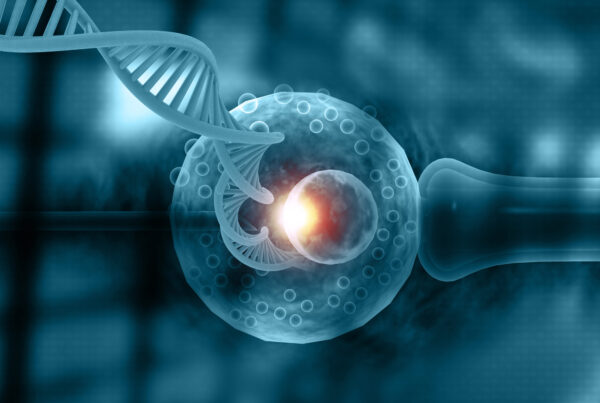There are various reasons why a couple may want a child of a particular gender, therefore choosing the sex of a baby during pregnancy and before birth is commonplace. In some countries sex selection is permitted only for medical reasons to eliminate genetic diseases like Haemophila A and Duchenne’s muscular dystrophy that occur in males but are only carried or transferred by females.
Sex selection can be done either for medical reasons or for family balancing. The various scientific methods of sex selection help to significantly improve the chance of couples having a child of the desired gender instead of relying on chance. Opting for sex selection is quite popular and could be done to help “balance” the family by having children of both sexes.
Nordica Fertility Centre offers scientific and evidence-based sex selection. The option to choose the gender of your baby is quite commonplace these days even though there may be one or two arguments against it in some circles. Gender selection is just one small aspect of the genetic testing that can take place before a woman even gets pregnant. Pre-implantation Genetic Diagnosis, PGD, is currently the best scientific method for selecting the gender of a child. It is one of the triumphs of modern Assisted Reproduction Techniques, ART.
It is almost 100 per cent certain of selecting the desired sex. It is a complete chromosomal analysis of each embryo. The screening is usually in response to medical indications, such as multiple miscarriages or failed past IVF cycles, or advanced maternal age. With a regular cycle, about 40 to 50 percent of implanted embryos will result in a healthy pregnancy. If you utilize a screened embryo, it increases those chances to about 60 to 70 percent. In PGD the woman first goes through IVF.
Her ovaries are stimulated using medications to produce eggs, the eggs are retrieved and fertilized using her partner’s sperms and the resulting embryos are biopsied (a small cell is removed from each) and analysed to determine the gender of the particular embryo. Embryos of the desired sex are then transferred into the woman’s womb where they grow into a viable pregnancy. How it happens is quite straightforward. During IVF, embryos are created from a combination of your eggs with your partner’s sperm in the laboratory.
When the embryos formed from this process are a few days old, you can choose to have them screened for genetic abnormalities using PGD. This means that the embryos are thoroughly screened and analysed to ensure that they have normal genetic makeup. Embryos with any form of genetic abnormalities are identified and not utilized in the subsequent processes. What is done is to scrutinize the X and Y chromosomes to check for abnormalities. From the examination process, the gender of each embryo, XX (female) or XY (male), becomes obvious. As soon as it is confirmed that you have embryos that are healthy and viable, on request, you may also be informed about which are female and which are male.
There are instances in which more than one embryo is normal, and there are both males and females however, there is usually no imposition on you to select one gender or the other. As long as everything is in order, the gender chosen is entirely your personal choice. If you desire, you may choose to freeze other healthy embryos for use in later pregnancies. PGD has been quite successful. The fertility clinic normally explains the procedure and all questions regarding cost and other concerns are answered.
It is often considered a worthy investment to ensure a successful pregnancy and a healthy baby of the gender of your choice. Besides gender selection, if you have had multiple miscarriages, or perhaps you are in your mid-30s or older, or have been diagnosed with genetic diseases, you may want to ensure such traits are not passed on. With PGD, it is almost unfathomable to transfer an embryo whose genetics are unknown. Healthier babies are now being born If you’re a couple that desires a daughter or son to complement your existing children, then “family balancing” is what you need. It works like this:
Parents with children of one gender who want a child of the other sex can have it. With first-time parents who have no fertility or genetic concerns, IVF and PGD are not solely for gender selection. As professionals, we have clear ethical guidelines. Good fertility clinics mainly screen embryos for health. And if a patient wants to know the gender as a by-product, it is alright to do so.
There are great potentials for PGD. For now, it is used primarily to help parents have less stressful pregnancies and healthier babies. With PGD you can choose your baby boy or girl before birth. We know that once parents are closer to achieving their total desired number of children, the gender composition of children already born becomes an important determinant of another child being born.
Rather than trying repeatedly and hoping on chance it’s better to utilise a reliable method of selecting the sex of the child. Sperms can also be sorted using fluorescent technology into Y chromosome for the boy carrying sperms and X chromosome (girl) carrying sperms. However, not all couples are suitable for this method. The sperm count of the male partner must be within normal limits (at least 20 million sperms per ml with 50 percent motility). Sperm samples are collected over a period and banked until a total of about 200 million sperms are collected. They are frozen and sent for sorting.
The sorted samples are sent back usually within three to four weeks and depending on the desired gender, the appropriate sperm is used to inseminate the woman or to fertilise her egg during processes of assisted reproduction. For the chances for a boy is 73 – 81 percent while that of a girl is 88-92 percent. There may be issues in PGD, although not common. Embryos may be damaged during testing if not properly handled. Also, the desired sex may not be achieved as all the embryos produced in PGD may be of the sex being selected against. The Micro sort method may also result in getting the undesired gender as it is not 100 percent effective.
The greatest advantage of PGD is that it can alongside sex determination, also check if the embryos are genetically normal so the chances of an abnormal embryo even if is of the desired gender being transferred into the woman’s womb is reduced significantly.
Again, I would stress that you wouldn’t be eligible for IVF simply for the purposes of
gender selection. In most cases, the ultimate goal is a healthy pregnancy, not a
specific gender.




